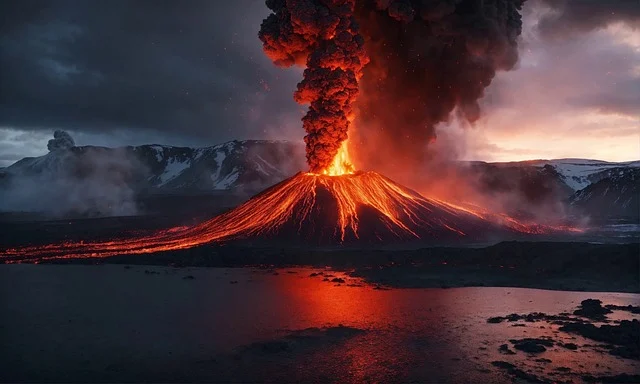In 1815, Mount Tambora erupted with a force so immense that it altered the course of history. The explosion hurled vast amounts of sulfur dioxide into the atmosphere, reflecting sunlight and causing global temperatures to plummet. The aftermath was catastrophic—a “year without a summer” that led to widespread crop failures, famine, and a cholera pandemic. Even cultural phenomena, such as Mary Shelley’s Frankenstein, were indirectly inspired by the bizarre climatic aftermath. Tambora’s legacy endures as a stark reminder of the power of nature.
More than two centuries later, scientists warn that the world faces an imminent threat of another massive volcanic eruption. Geological evidence suggests a 1-in-6 chance of such an event occurring this century. But unlike the early 19th century, today’s world is vastly different—more populated and significantly warmer due to climate change—raising concerns about the potential for even greater disruption.
Massive eruptions profoundly impact the planet, primarily through the release of sulfur dioxide into the stratosphere. This gas forms aerosol particles that scatter sunlight, temporarily cooling the Earth. Historical eruptions, like Tambora and Indonesia’s Samalas in 1257, caused temperature drops of up to 1.5 degrees Celsius, leading to widespread agricultural collapse and altered weather patterns. Modern satellite data has shown how sulfur dioxide emissions from eruptions like Mount Pinatubo in 1991 cooled the planet by 0.5 degrees Celsius for several years, despite being less intense than Tambora.
Climate change could amplify the impacts of a future eruption. A warming atmosphere accelerates air circulation, allowing aerosols to disperse faster and scatter sunlight more efficiently, intensifying cooling effects. Rising ocean temperatures might also exacerbate disruptions by concentrating cooling in the upper layers of the ocean, further affecting weather systems. Additionally, melting ice caps and heavier rainfall, driven by climate change, can destabilize volcanic systems, increasing the likelihood of eruptions.
The consequences of a massive volcanic eruption would be devastating. Immediate effects could include the obliteration of cities near active volcanoes, such as Naples, Italy, near Campi Flegrei. Over time, colder temperatures, reduced sunlight, and erratic rainfall could disrupt global food supplies, heighten political tensions, and trigger economic losses estimated at $3.6 trillion in the first year alone.
Despite these risks, the world remains unprepared. Massive eruptions are unpredictable, making it difficult to pinpoint where or when the next might occur. Potential hotspots include Indonesia and Yellowstone in the United States. Scientists stress the importance of preparedness, including stress tests, evacuation plans, and strategies to secure food supplies and provide humanitarian aid.
Though the probability of such an volcanic eruption may seem low, its potential impacts are enormous. As history shows, the planet’s geological forces are unstoppable, but proactive planning could mitigate the devastation of the next massive volcanic event.
Did you like it? 4.7/5 (24)








